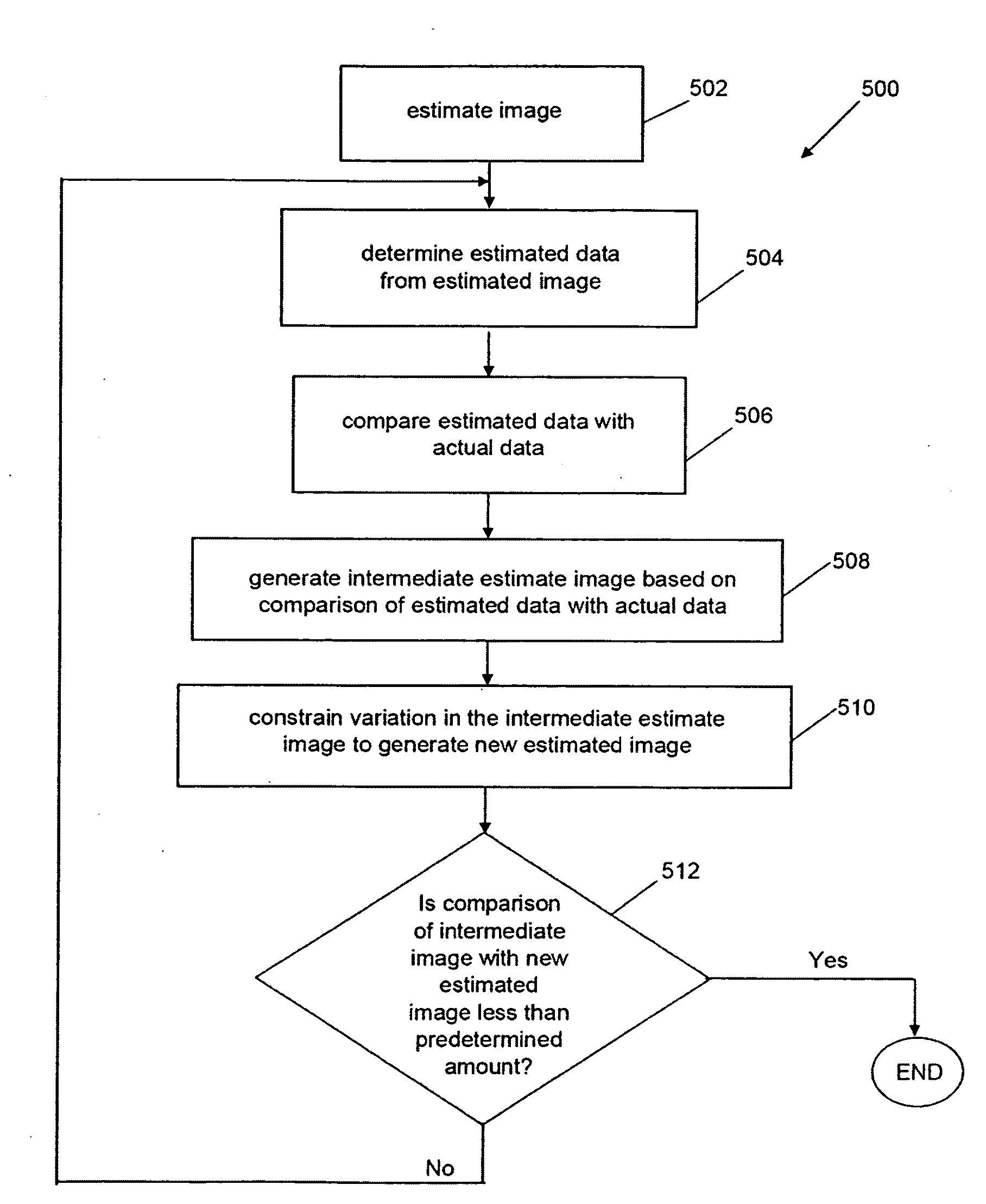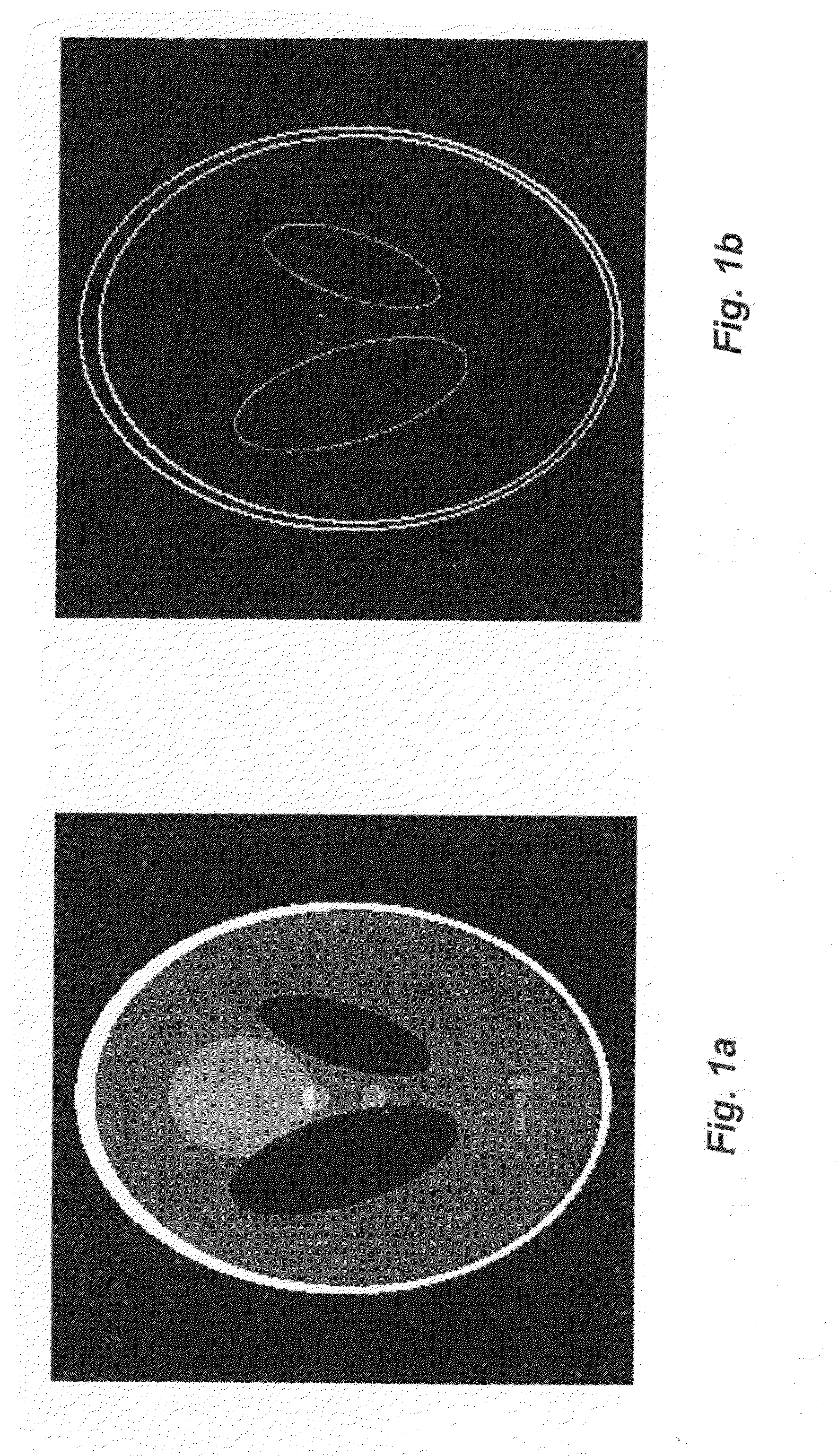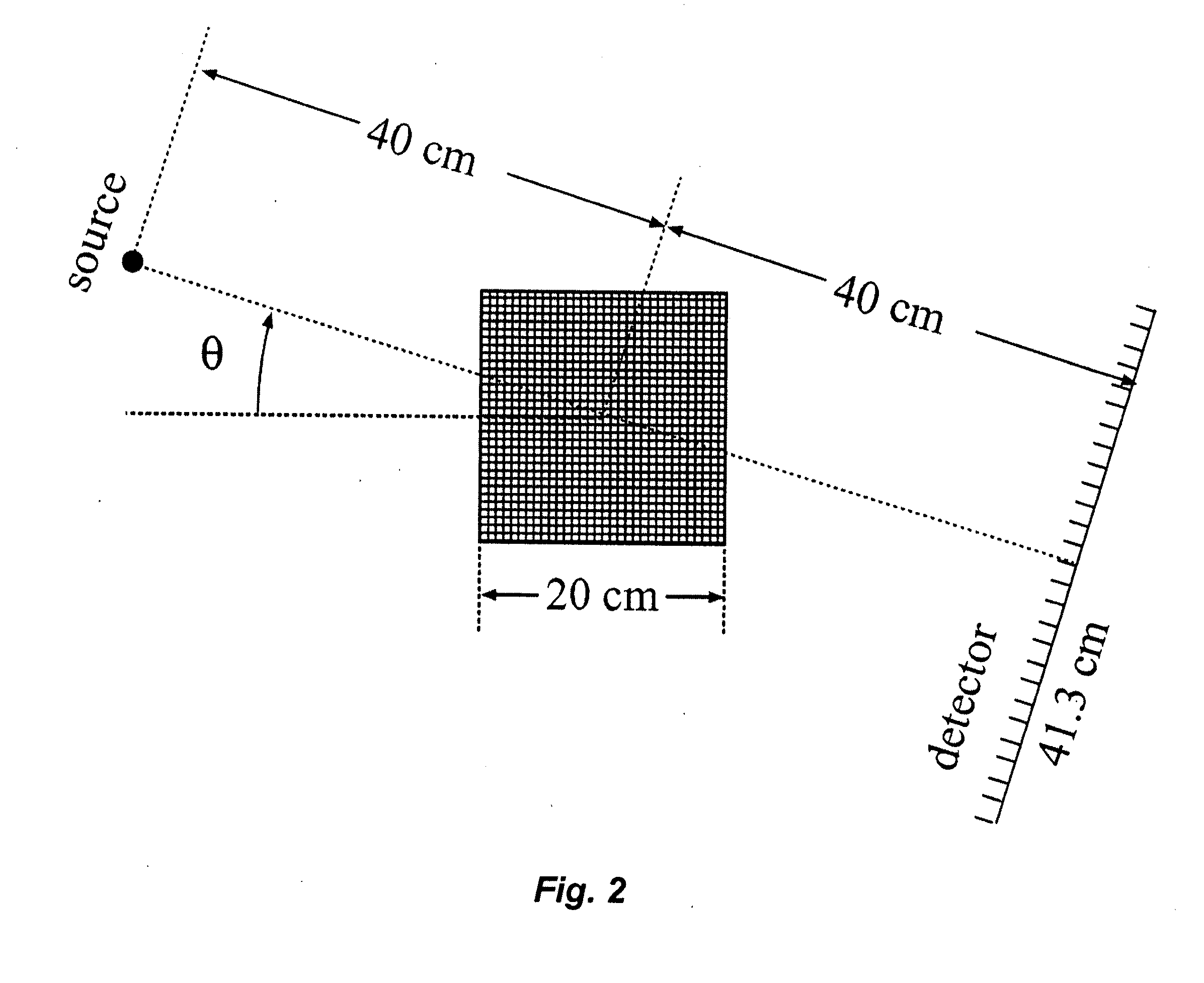Image Reconstruction From Limited or Incomplete Data
a technology of incomplete data and image reconstruction, applied in the field of imaging objects, can solve the problem that the actual data may not be enough to precisely reconstruct the image using conventional techniques, and achieve the effect of lessening or reducing the total variation of the imag
- Summary
- Abstract
- Description
- Claims
- Application Information
AI Technical Summary
Benefits of technology
Problems solved by technology
Method used
Image
Examples
Embodiment Construction
In order to address the deficiencies of the prior art, a method and apparatus is described below for imaging an object using data which is limited or incomplete, such as few-views or limited angle data. The limited data may be due to a variety of reasons, such as few views, limited angle data, or other missing data problems (such as a bad detector). These reasons are provided as merely illustrative. For example, one may wish to reduce the dosage, the radiation exposure (such as in the instance of and X-ray source), the acquisition time, and / or data artifacts. In those instances, an image may still be generated, even though a limited amount of data is collected. As another example, the system and / or the object may result in a missing data problem. Specifically, the system may include a defect in it, such as a bad detector. Or, the object may include some aspect that limits the amount of data. As merely one example of this, the presence of any region of an object that effectively prev...
PUM
 Login to View More
Login to View More Abstract
Description
Claims
Application Information
 Login to View More
Login to View More - R&D
- Intellectual Property
- Life Sciences
- Materials
- Tech Scout
- Unparalleled Data Quality
- Higher Quality Content
- 60% Fewer Hallucinations
Browse by: Latest US Patents, China's latest patents, Technical Efficacy Thesaurus, Application Domain, Technology Topic, Popular Technical Reports.
© 2025 PatSnap. All rights reserved.Legal|Privacy policy|Modern Slavery Act Transparency Statement|Sitemap|About US| Contact US: help@patsnap.com



